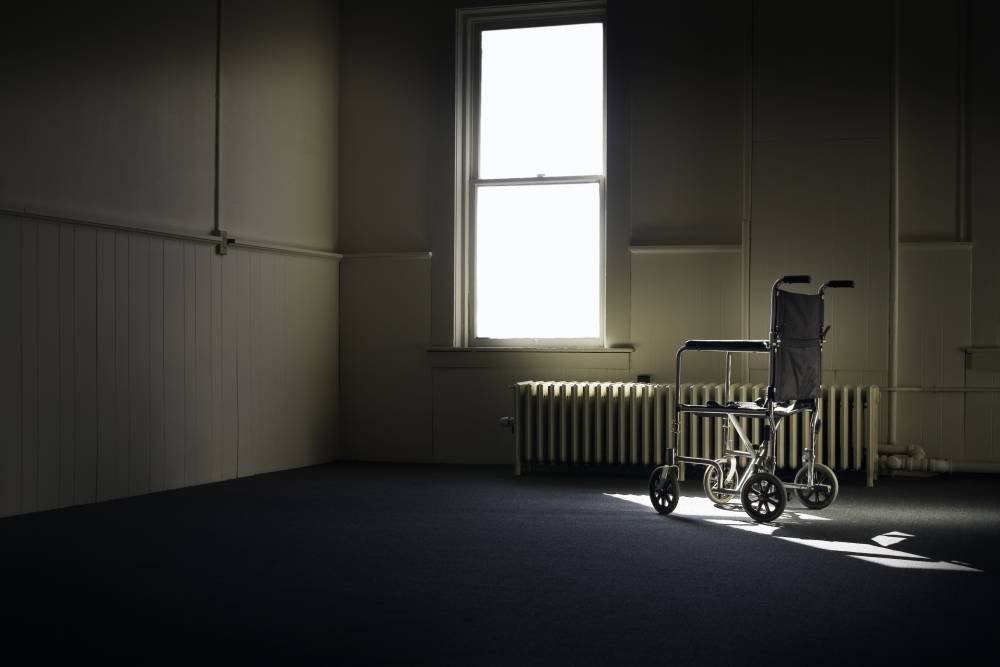
Newmarch House has just recorded its 19th death from COVID-19, bringing Australia to the grim milestone of one hundred deaths from the virus.
As the nation marks the occasion, the CEO of Newmarch House has spoken to the media about what occurred at the home in the early days of the outbreak.
Grant Millard, the CEO of Newmarch House, told the ABC’s Fran Kelly that with the benefit of hindsight, he wishes residents who contracted the deadly virus had been moved to hospital, rather than remain on site.
Mr Millard told Fairfax Media his team struggled to get enough registered nurses and personal protective equipment early in the crisis.
He said NSW Health adopted a ‘hospital-in-the-home’ approach to the care of sick residents in an effort to contain the spread of the virus, but in practice they did not have enough staff or PPE to achieve that outcome.
Hospitals on the other hand were prepared for an influx of patients with the virus, having cancelled elective surgeries, he said.
The outbreak was also identified on Easter Saturday, and so was only able to reach out for additional staff the next working day.
Mr Millard told the ABC decisions were made jointly with the Federal Minister for Aged and state healthy authorities, and any family who wanted a hospital transfer for their loved one was able to have them taken to hospital.
But he said “if I had my time again I’d be insisting that people who tested positive for COVID-19 would go to hospital.”
“In hindsight, that would have been my preference.”
The amount of PPE required was “incomprehensible”, he said. Initially $21,000 worth of PPE was being used every day. No aged care facility has that level of PPE in store, he said.
In response to claims infection control procedures at Newman House were lacking, Mr Millard said they are now “vastly improved” from what they were.
On Monday, the New South Wales chief health officer, Dr Kerry Chant, defended the decisions made at Newmarch in the first weeks of the outbreak.
“There was a process of having expert clinical advice about what was in the best interest of the residents of Newmarch House, and that was the strategy that was considered appropriate.
“There’s a lot of issues around balancing for elderly people about moving them into a hospital or into another aged care facility,” she said.
“There was an expert group of clinicians involved in setting up the plans … It is very complex decision-making.”
Mr Millard also acknowledged that communication was a problem, at least in the early days of the outbreak.
“We were scrambling for staff just to provide basic care,” he said. “We just didn’t do a good enough job communicating with families. We were writing to them every day, but they really wanted to know ‘how was their mum or dad’, and ‘what was happening in the home’?”
With the majority of staff in the home at the time being new to the facility, it was also difficult for them to provide personalised updates as they weren’t familiar with the residents or their families. “It was a challenge,” Mr Millard said.
He explained that two weeks ago Newmarch House was a “complex environment”.
“It was vastly challenging, everyone was extremely stretched.”
“The scale of the situation caught everyone by surprise,” he said.
The Royal Commission into Aged Care Quality and Safety will examine what occurred at Newmarch House, and Mr Millard said he hopes lessons will be learned from the aged care facility’s experience.
The Newmarch House staff member who continued to work while infected is still on leave. Other staff check in with her at least every second day, and he himself has spoken to her. She is being provided with counselling services.
She is still upset and “carries a large amount of grief”.
“She ought to bear no guilt,” Mr Millard said. “Covid is a terrible, terrible illness.”
As well as the 19 deaths at Newmarch House from COVID-19, 71 cases have been associated with the facility. No new infections have been recorded since 28 April.
The nsw department of health caused the death toll at Newmarch, not Angkicare.
It is not a complex decision to send highly contagious people to hospital, it’s the easiest decision to make. The hospital has the expertise, staff, equipment and all necessary resources and nursing homes do not.
Nothing but a disgrace insisting that “advanced care plans” and “security of tenure” were paramount in a not before seen pandemic.
Queensland health acted perfectly in Rockhampton but not everyone has gotten the message. ACT health is still umming and arring about access to their Covid 19 wards while these Covid wards sit staffed, ready and empty.
Anyone even suspected of being Covid positive should be whisked away to appropriate care.
Just another example of the complete lack of common sense in Government… State or Federal.